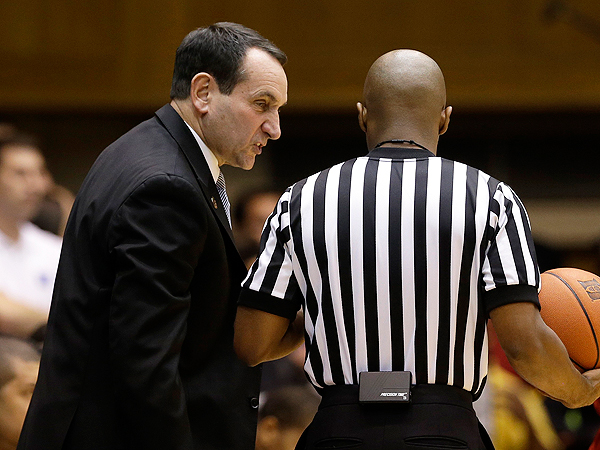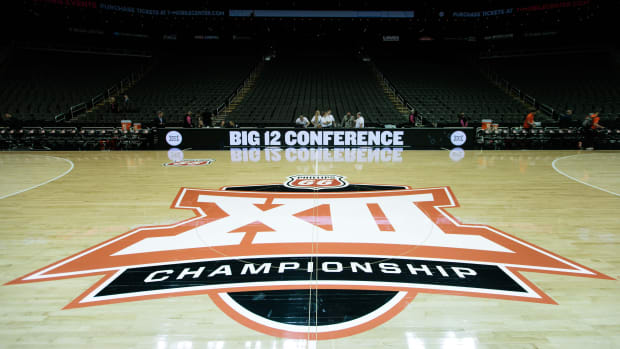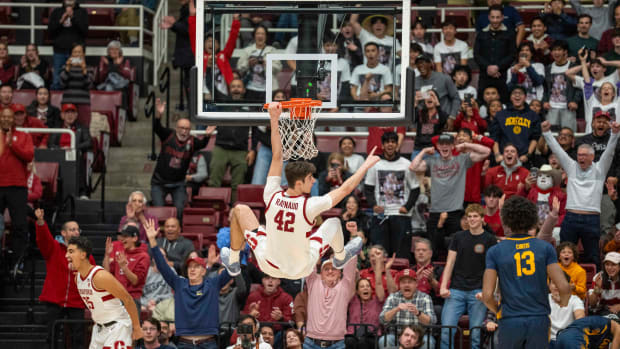New rules watch: The players are scoring again
Who will adjust more quickly to the new rules, officials or coaches? (Gerry Broome/AP Photo)
With college basketball’s first full week-plus in the books, let’s pause and take further inventory of the impact of the much-discussed offseason rules changes. Ken Pomeroy offered an early analysis of their influence by comparing first weekend statistics from the last two seasons. With a larger available set of data now, are KenPom’s first weekend findings still holding true? Namely, are fouls, scoring and tempo still on the uptick this season? Have the freedom of motion initiatives significantly impacted the game in any other areas? Let’s dig in ...
While the extra week’s worth of games does provide us with a little more data for the examination, we should keep in mind that we are still working with a small sample size and an unusual number of lopsided games as big programs take on light nonconference schedules. For example, Oklahoma State scored 117 points against Mississippi Valley State in its season opener; not only do the Delta Devils not reappear on the Cowboys Big 12 schedule, but it’s unlikely Marcus Smart's squad comes close to matching that output against any team that does. Quite clearly, the first couple weeks of the season are filled with mismatched foes and lopsided victories -- things you rarely see after January.
While there may be some fans of good old-fashioned free-throw shooting competitions out there, I speak to everyone who enjoys actual basketball games when I say the numbers seem to be heading in a positive direction for the game. Per the aggregated data at StatSheet, fouls are down from their first weekend average of 42.7 (now 41.5 per game), but points per game have continued to trend up, with the 2013-14 average now at 147.4 per game -- a full three points more than when we checked in a week ago. Additionally, the gains between this year and last season in points per game can no longer be solely accounted for by the onslaught of trips to the charity stripe, a phenomenon Pomeroy discovered after the first weekend. Scoring is up by 13 points per contest, but made free throws have increased by only six a game.
So where are those extra points coming from? Turnover percentage, while higher now than a week ago, remains at a historically low clip of 19.1 percent, and overall field goal percentage is the highest it has been since the 2007-08 campaign. Possessions per game has remained pretty much constant since the first weekend, sitting a full nine possessions per game ahead of the average from the year of the snail last season. As KenPom noted, much of that difference is due to the shorter possessions wrought by increased trips to the free throw line, but, either way, it’s a move in the right direction.
A week ago, Pomeroy wrote that “essentially, we’ve traded more free throw possessions for fewer turnover possessions.” Little has changed on this front in the week since. College basketball’s statistical wizard also noted that turnover rates tend to fall as the year progresses. Will it still be the case this season? As players and teams adjust to the tighter whistle, we can
expect that free throw attempt averages will come down at least slightly. Will those lost trips at the stripe be turned into turnovers, or will they be distributed into other possession types also? If the free-throw-for-turnover swap is as salient as it appears, it could mean that turnover percentage will be creeping up throughout the rest of the year.






